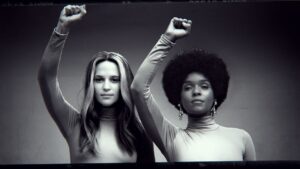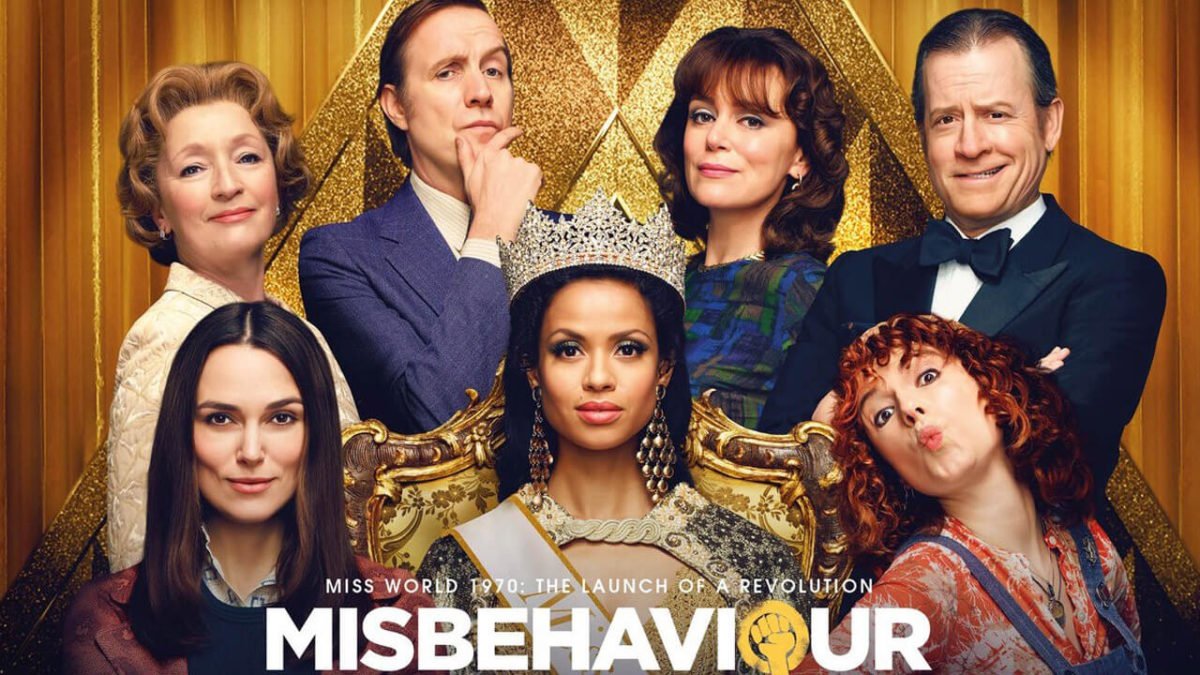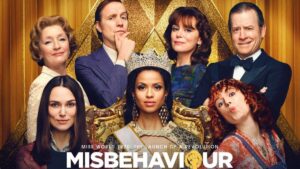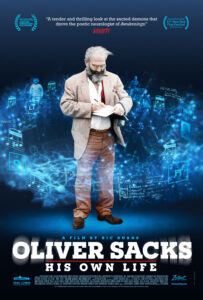The Glorias
Posted on September 29, 2020 at 3:13 pm
B +| Lowest Recommended Age: | Middle School |
| MPAA Rating: | Rated R for R brief lewd Images and some language |
| Profanity: | Some strong language |
| Alcohol/ Drugs: | Social drinking |
| Violence/ Scariness: | Mental illness, family issues, sad death, |
| Diversity Issues: | A theme of the movie |
| Date Released to Theaters: | September 30, 2020 |

Like the opening scene, these conversations occur on a bus, a literal and metaphoric representation of the experience of a woman who titled her memoir A Life on the Road. At one point in the film she admits she has spent no more than eight days at a time in her New York apartment, which she hesitates to refer to as her home. Her friends joke about staging an intervention just to get her to furnish it. This goes back to the beginning. There’s a reason she entitled her memoir, the inspiration for this film, My Life on the Road. She says in the book and slightly adapted for the movie, “When people ask me why I still have hope and energy after all these years, I always say: Because I travel. Taking to the road—by which I mean letting the road take you—changed who I thought I was. The road is messy in the way that real life is messy. It leads us out of denial and into reality, out of theory and into practice, out of caution and into action, out of statistics and into stories—in short, out of our heads and into our hearts.”
Taymor brings her remarkable visual style to the film. The scenes on the bus are gray-scale, with flickers of color outside the windows. In a breathtaking moment near the end, the interior of the bus is flooded with color, illuminating the immensely moving commitment to equality and opportunity that continues today. The four actresses portraying Steinem all have a quiet power rooted in empathy and integrity. Alicia Vikander plays her as a young women, told in her first interview for a job in journalism that only men write for the publication; women do research. She gets the editor to let her write, but when she asks to write a profile of the mayor of NY, he suggests she write about his wife. She goes undercover as a Playboy bunny waitress in the Playboy Club, but her expose (which did lead to the end of the practice of requiring the women to have gynecological exams in order to work there) made her colleagues think of her as a bunny, not an investigative journalist.
Her two great loves, writing and dancing, were both forms of communication without having to speak, a therapist tells her. But if the media would not allow her to write about the women’s movement (“What movement?” her editor asks), she would have to become its voice. Julianne Moore takes over as the older Steinem, and the film gracefully exemplifies one of the movement’s most-repeated slogans, “The personal is political,” as it weaves together key moments and characters on and off stage. Bette Midler and Lorraine Toussaint have just the right snap as Bella Abzug and Flo Kennedy. And Vikander and Moore bring great warmth to the role of a woman whose strengths were quieter.
The film achieves what is most likely Steinem’s greatest hope; it is both inspirational and reassuring in illuminating a path forward to a more just and inclusive world, and a powerful reminder that the most important ingredient for achieving it is to listen.
Parents should know that this film includes a brief crude caricature, brief graphic images and some strong language. There is a sad death and a character struggles with mental illness.
Family discussion: Why did someone call Gloria Steinem a “celestial bartender?” How was she influenced by her parents? Why did she decide to leave journalism? What has been her most significant influence?
If you like this, try: The documentaries Dolores, Gloria: In Her Own Words, “RBG,” “Sisters of ’77,” about the National Women’s Conference, and “Mrs. America,” about the backlash to the women’s movement. And read the biographies of Wilma Mankiller, Bella Abzug, and some of the other characters in the film
THE GLORIAS is available for purchase on Digital and Streaming exclusively on Prime Video starting September 30th.









